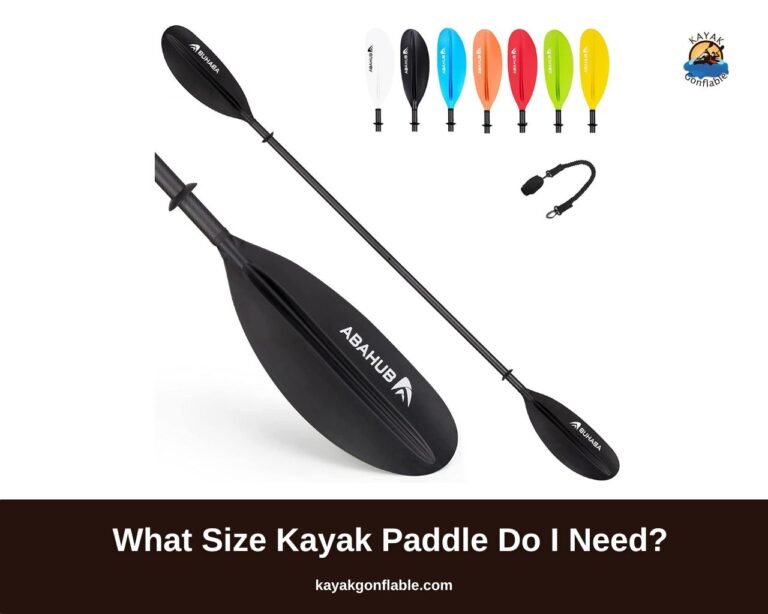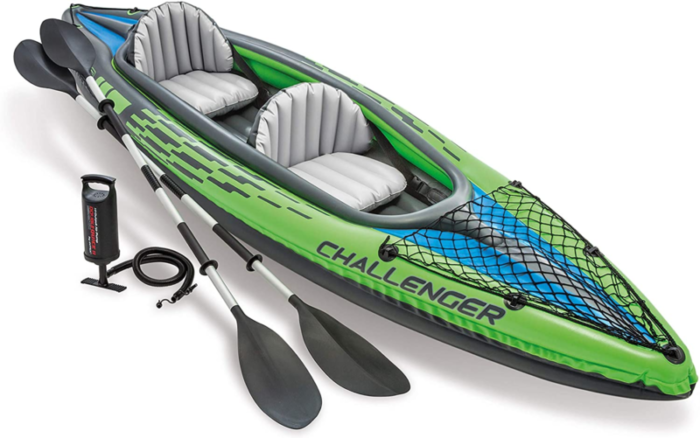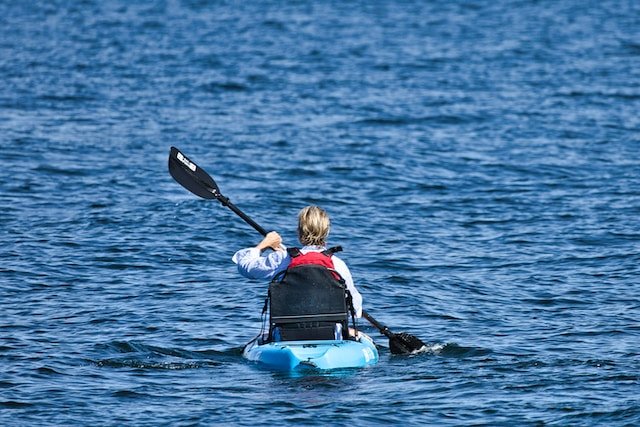How Long Do Kayaks Last?

When it comes to watercraft, kayaks are a pretty popular choice among nature enthusiasts and sports lovers. Kayaks offer a unique way of exploring different waterways, but however, you might have asked yourself a key question, “How long do kayaks last?”
This article aims to provide just the answer you’re looking for. Before delving into the essential factors that influence the longevity of your kayak, it’s important to grasp the significance of kayak lifespans.
Understanding how long you can expect your kayak to last gives room for you to make informed choices about the kayak’s maintenance, replacement, or upgrades.
Also, it ensures your safety while out on the water, as a kayak nearing the end of its lifespan may become less reliable and potentially dangerous for you and its other users.
On average, most kayaks last between 5 and 20 years, based on use, care, and maintenance.
How Long Do Composite Kayaks Last? (Fiberglass, Kevlar, and Carbon Fiber)
Composite kayaks are known for their exceptional performance but require careful handling and maintenance to prevent damage. With proper care, fiberglass kayaks can last 20 years or more.
Rinse off salt water after use and clean with mild soap to prevent degradation of the fiberglass. Regularly check for cracks or delamination and address them quickly.
Apply UV-resistant coatings to prevent sun damage. Avoid collisions with rocks and other hard surfaces during paddling.
Pros:
- They’re lightweight
- They’re excellent performance
Cons:
- They’re expensive
- Prone to damage if not handled carefully
How Long Do Plastic Kayaks Last?
Polyethylene/Plastic kayaks are durable for recreational purposes and use, but can deteriorate with prolonged exposure to UV radiation. These kayaks are also popular for their affordability.
However, their lifespan can vary based on usage and care. Polyethylene kayaks typically have a lifespan of 8 to 15 years with proper care.
Storing your polyethylene kayak indoors or in the shade can help extend its life by reducing UV exposure. Routine cleaning, inspecting for damage, and applying UV protectants can prolong its lifespan. Limiting hard-core activities like whitewater kayaking can prevent premature wear and tear.
Pros:
- It’s Affordable
- It’s good for recreational use
Cons:
- It’s susceptible to UV damage
- It may require replacement after several years of heavy use
How Long Do Wooden Kayaks Last?
Wooden kayaks require diligent maintenance but can last for years with proper care. They are prized for their aesthetic appeal but require specific care to maintain their longevity. The type and quality of wood used in construction influence lifespan.
Regularly re-varnishing and sealing the wood is crucial to prevent rot and decay. Proper indoor or shaded storage can prevent exposure to extreme elements. With wooden kayaks, more than a century of use is expected, if you properly maintain and care for it.
Pros:
- Can be repaired easily
- Is aesthetically pleasing
Cons:
- Requires regular maintenance
- Susceptible to rot if not properly cared for
How Long Aluminum Kayaks Last?
Aluminum kayaks are probably the best in terms of durability when it comes to kayak materials. They require way less care and maintenance than plastic or wood kayaks do and can take a beating from the water without compromising quality.
It’s important to note that these kayaks are typically pretty heavy, but they last for more than 20 years on average, if properly used and maintained.
Pros:
- Strong durability and longevity
- Aesthetically pleasing
Cons:
- Requires regular maintenance
- Pretty heavy compared to other kayak types
How Long Do Inflatable Kayaks Last?
Inflatable kayaks offer unique advantages but have their own considerations when it comes to durability. Inflatable kayaks typically have a lifespan of 5 to 10 years, depending on usage and maintenance. Avoid sharp objects and rough surfaces to prevent punctures and abrasions.
Pros:
- Easy to store and transport
- Suitable for beginners
Cons:
- Prone to punctures and abrasions
- Shorter lifespan compared to hard-shell kayaks
Factors Affecting The Lifespan of A Kayak
1. Your Storage and Maintenance Practices
Proper storage and maintenance practices have a significant impact on a kayak’s lifespan.
Regular Maintenance Procedures
- Cleaning: Rinse off salt water after use and remove any debris or sand from the kayak’s surface.
- Inspection: Periodically inspect your kayak for cracks, dents, or other damage, addressing issues promptly.
- UV Protection: Apply UV-resistant coatings to safeguard against sun damage.
- Lubrication: Regularly lubricate moving parts like hatches and rudders to ensure smooth operation.
Proper Kayak Storage Tips
- Ensure to store your kayak in a cool, dry place away from direct sunlight.
- If storing outdoors, ensure to use kayak covers to protect against UV exposure and environmental elements.
- Consider hanging your kayak to prevent deformation over time.
2. The Kayak’s Material
The material from which a kayak is made lays the proper foundation for its durability. It is important to select a kayak made from the right type of material(s). Kayak materials include PVC, Fiberglas, Kevlar, Carbon Fiber, Wood, and Polyethylene/Plastic.
3. Your Usage Patterns
The frequency and intensity of your kayak usage also play an important role in its longevity. Frequent, intense usage, such as whitewater kayaking, can lead to faster wear and tear. Try your best to match the type of kayak to your intended activities to ensure longevity.
Use kayak roof racks or trailers to securely transport your kayak without causing damage. Learn and employ proper kayak launching and landing techniques to prevent unnecessary collisions and abrasions.
How To Extend Your Kayak’s Lifespan
Your kayak’s lifespan depends not only on its material but also on how well you can maintain and care for it. With the right storage, maintenance, and repair, you can significantly extend the life of your kayak.
Proper Kayak Storage Locations
- Garages: Storing your kayak in a garage is a great option, as it provides shelter from the environment and UV radiation.
- Sheds: If you don’t have a garage, a shed can offer protection from the sun, rain, and temperature fluctuations.
- Covered Outdoor Spaces: Covered patios or carports can also be suitable, but avoid direct sunlight beating your kayak.
Kayak Stands and Covers
- Kayak Stands: Use kayak stands or racks to prevent deformation when your kayak is resting on a hard surface. This ensures even weight distribution and minimizes hull distortion while out on the water.
- Kayak Covers: Invest in high-quality kayak covers to shield your kayak from UV exposure, rain, and dust when stored outdoors.
Repair and Restoration
Even with proper care, kayaks can develop damage over time. Knowing how to identify and deal with common issues is crucial.
- Cracks: Cracks in the kayak’s hull or deck require immediate attention, as they can lead to water infiltration and structural problems.
- Scratches: Minor scratches are common and usually do not affect the kayak’s performance. They can often be buffed out or left as is.
- Holes: Holes, regardless of their size, should not be ignored. Even small punctures can worsen over time, posing a safety risk.
- Leakage: If you notice water inside your kayak after use, locate and seal any leaks as soon as possible.
- Warping: Warping or deformation in the kayak’s shape can affect its performance and handling. Warped kayaks may not track or maneuver correctly.
- DIY Repair: Minor repairs like patching small cracks or filling scratches can often be done at home with repair kits available for your kayak’s specific material. Ensure to follow the manufacturer’s guidelines carefully.
- Professional Repairs: Major structural damage or complex repairs may require professional assistance. A skilled technician can assess and repair the kayak to ensure its integrity and safety.
Signs Your Kayak Needs Replacement
- Cracks, holes, and warping In your kayak.
- Structural damage to the kayak.
- Reduced Buoyancy and Waterlogging: A kayak that loses buoyancy or becomes waterlogged is no longer safe for use. It may sit lower in the water than usual, making it prone to sinking. If you consistently find excess water inside the kayak after outings, it’s a clear indication of a problem that needs addressing.
- Loss of Stability or Tracking: If you notice a significant decrease in stability or have difficulty keeping your kayak on course, it may be a sign of underlying issues. Unexplained changes in how your kayak handles, such as increased wobbling or difficulty staying upright, are red flags.
- Material Breakdown and Brittleness: Press gently on the kayak’s surface; if it feels excessively brittle or fragile, it may no longer be safe for use.
As kayakers, we have to make informed decisions that positively impact our paddling experiences and the ecosystem. Choose your kayak materials wisely, opt for sustainable options from responsible brands, and always consider the environmental consequences of your actions.






